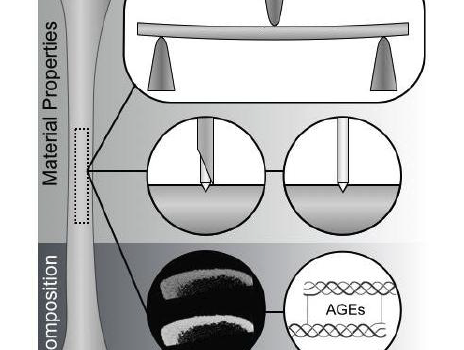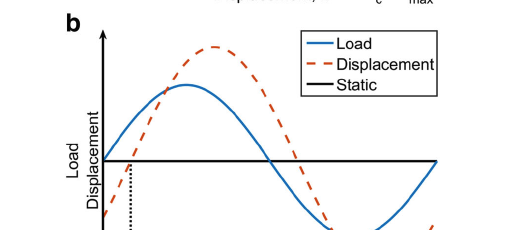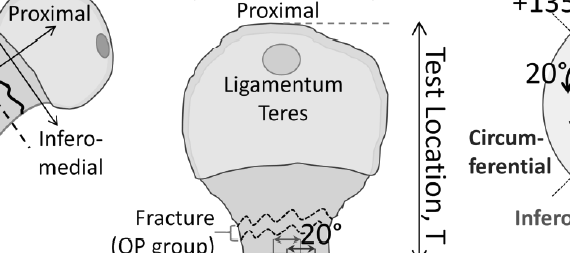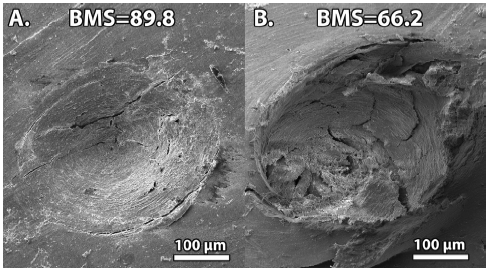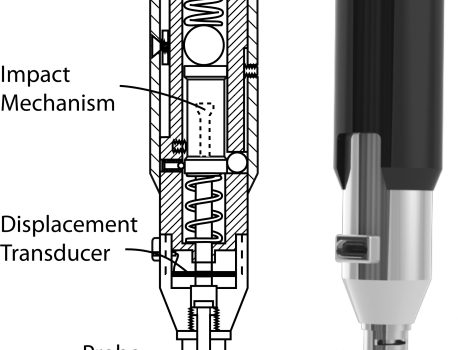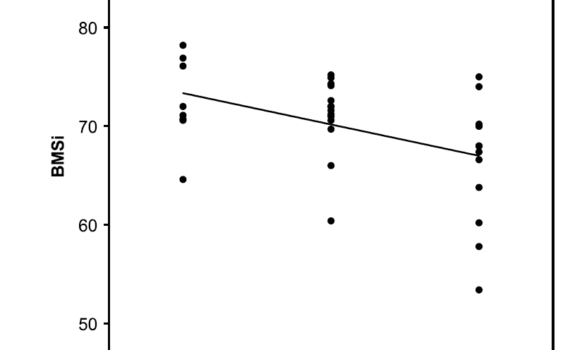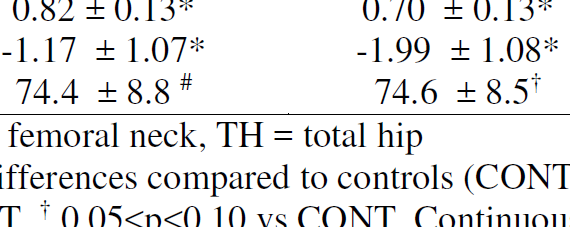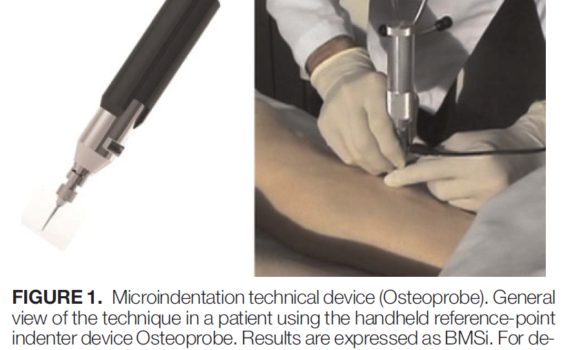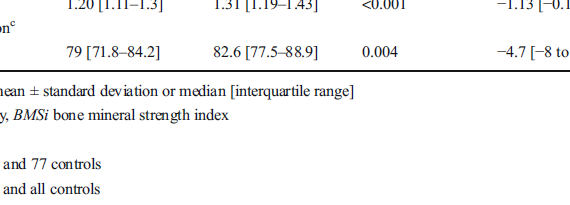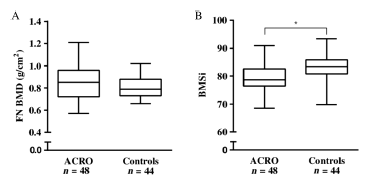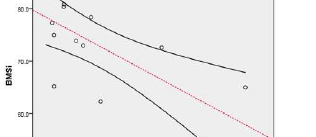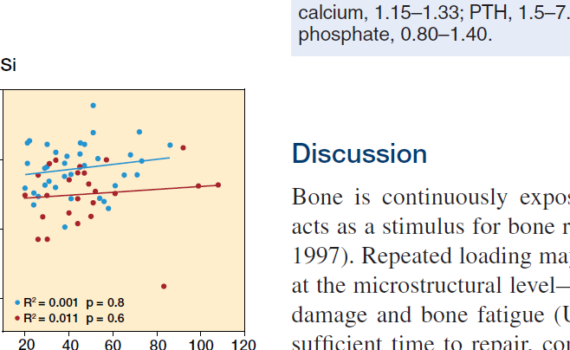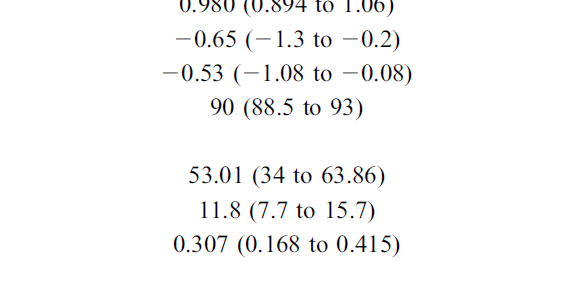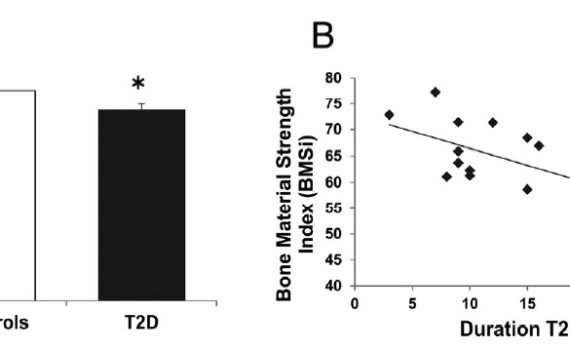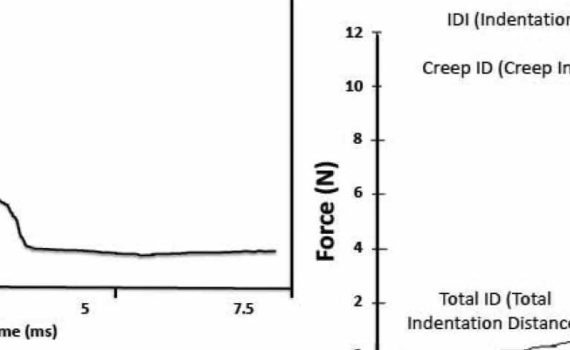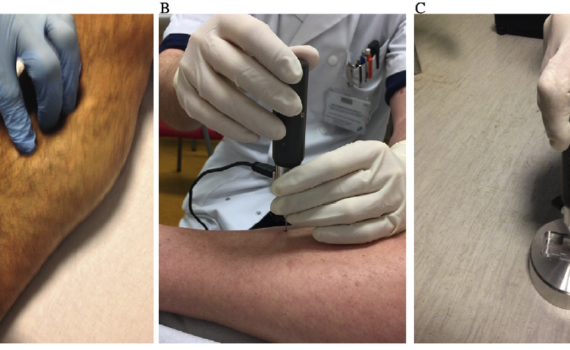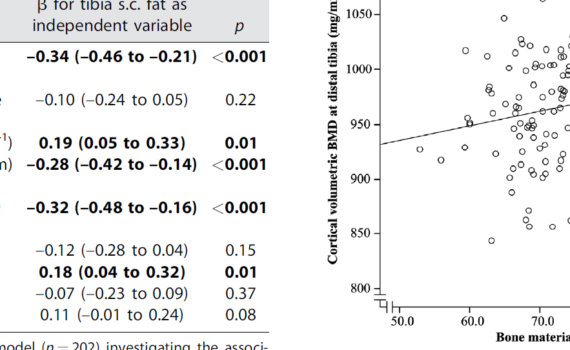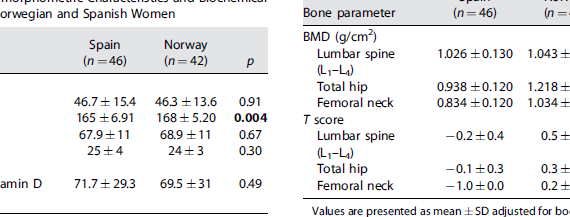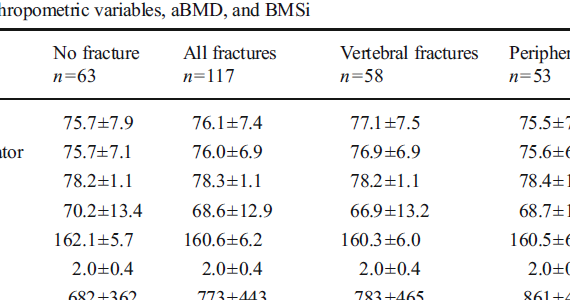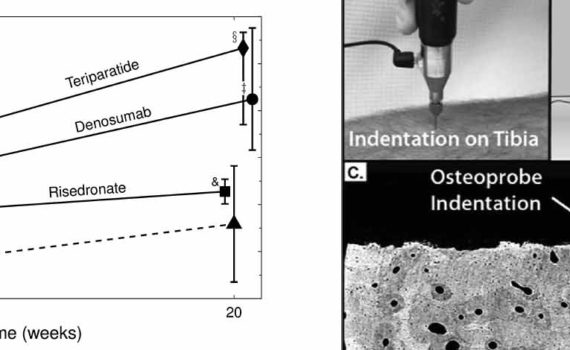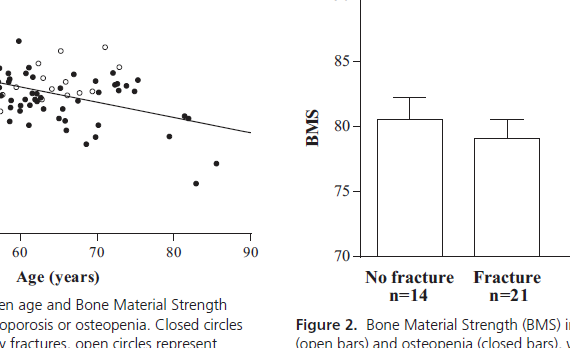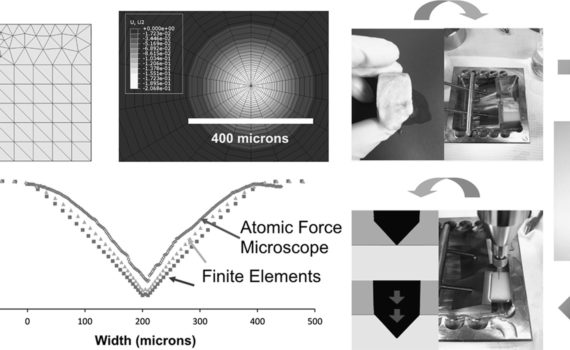Abstract The assessment of fracture risk often relies primarily on measuring bone mineral density, thereby accounting for only a single pathology: the loss of bone mass. However, bone’s ability to resist fracture is a result of its biphasic composition and hierarchical structure that imbue it with high strength and toughness. […]
OsteoProbe
Abstract Caloric restriction (CR), protein restriction (PR), and specific amino acid restriction (e.g., methionine restriction (MR)) are different dietary interventions that have been confirmed with regard to their comprehensive benefits to metabolism and health. Based on bone densitometric measurements, weight loss induced by dietary restriction is known to be accompanied […]
Abstract Dual-energy X-ray absorptiometry (DXA) is generally a very useful tool for assessing bone mineral density (BMD) and fracture risk. However, observational studies have shown that in certain instances, BMD as measured by DXA systematically over- or underestimates fracture risk. We herein describe the clinical conundrums encountered when assessing fracture […]
Abstract Substantial evidence exists that in addition to the well-known complications of diabetes, increased fracture risk is an important morbidity. This risk is probably due to altered bone properties in diabetes. Circulating biochemical markers of bone turnover have been found to be decreased in type 2 diabetes (T2D) and may […]
Abstract Tissue-level mechanical properties characterize mechanical behavior independently of microscopic porosity. Specifically, quasi-static nanoindentation provides measurements of modulus (stiffness) and hardness (resistance to yielding) of tissue at the length scale of the lamella, while dynamic nanoindentation assesses time-dependent behavior in the form of storage modulus (stiffness), loss modulus (dampening), and […]
Another diagnostic method recently introduced into the human clinical setting to assess bone quality and fracture risk is reference point indentation (RPI). This novel bone indentation technique has been employed in preliminary studies to assess bone tissue mechanical properties in people, and has been shown to correlate with traditional mechanical […]
Abstract Substantial evidence shows that skeletal fragility should be considered among the complications associated with type 2 diabetes. Individuals with type 2 diabetes have increased fracture risk, despite normal bone mineral density (BMD) and high BMI-factors that are generally protective against fractures. The mechanisms underlying skeletal fragility in diabetes are […]
Abstract Age-related fragility fractures are an enormous public health problem. Both acquisition of bone mass during growth and bone loss associated with ageing affect fracture risk late in life. The development of high-resolution peripheral quantitative CT (HRpQCT) has enabled in vivo assessment of changes in the microarchitecture of trabecular and […]
Abstract In contrast to traditional approaches to fracture risk assessment using clinical risk factors and bone mineral density (BMD), a new technique, reference point microindentation (RPI), permits direct assessment of bone quality; in vivo tibial RPI measurements appear to discriminate patients with a fragility fracture from controls. However, it is […]
Abstract The global trend towards increased longevity has resulted in ageing populations and a rise in diseases or conditions that primarily affect older persons. One such condition is osteoporosis (fragile or porous bones), which causes an increased fracture risk. Vertebral and hip fractures lead to increased morbidity and mortality and […]
We would like to thank Allen and colleagues for their thorough review of reference point indentation (RPI) for assessing bone mechanical properties in vivo.(1) The authors have focused on two separate RPI devices, the BioDent® and the OsteoProbe®, and have gone to great lengths to compare and contrast these instruments, which differ considerably […]
Abstract OBJECTIVE: To compare results obtained with a handheld reference point indentation instrument for bone material strength index (BMSi) measurements in the equine third metacarpal bone for various testing conditions. SAMPLE: 24 third metacarpal bones. PROCEDURES: Third metacarpal bones from both forelimbs of 12 horses were obtained. The dorsal surface […]
Abstract Diabetes and osteoporosis are both common diseases with increasing prevalences in the aging population. There is increasing evidence corroborating an association between diabetes mellitus and bone. This review will discuss the disease complications of diabetes on the skeleton, highlighting findings from epidemiological, molecular, and imaging studies in animal models […]
Abstract Although low bone mineral density (BMD) is strongly associated with increased fracture risk, up to 50% of those who suffer fractures are not detected as high-risk patients by BMD testing. Thus, new approaches may improve identification of those at increased risk for fracture by in vivo assessment of altered […]
Abstract Type 1 collagen matrix volume, its degree of completeness of its mineralization, the extent of collagen crosslinking and water content, and the non-collagenous proteins like osteopontin and osteocalcin comprise the main constituents of bone’s material composition. Each influences material strength and change in different ways during advancing age, health, […]
Abstract Deformations of vertebrae and sudden fractures of long bones caused by essentially normal loading are a characteristic problem in osteoporosis. If the loading is normal, then the explanation for and prediction of unexpected bone failure lies in understanding the mechanical properties of the whole bone-which come from its internal […]
Abstract Increased fracture risk, traditionally associated with type 1 diabetes, has lately been of great concern in patients with type 2 diabetes. A variable increase in fracture risk has been reported, ranging from 20% to 3-fold, depending on skeletal site, diabetes duration and study design. Longer disease duration, the presence […]
Abstract Bone fragility has emerged as a new complication of diabetes. Several mechanisms in diabetes may influence bone homeostasis by impairing the action between osteoblasts, osteoclasts, and osteocytes and/or changing the structural properties of the bone tissue. Some of these mechanisms can potentially alter the fate of mesenchymal stem cells, […]
Comment on Sclerostin deficiency is linked to altered bone composition. [J Bone Miner Res. 2014] https://www.ncbi.nlm.nih.gov/pubmed/25158054 J Bone Miner Res. 2014 Oct;29(10):2141-3. doi: 10.1002/jbmr.2346.
Abstract While insulin-like growth factor I is a well-known anabolic agent in bone evidence is beginning to accumulate that its homologue, insulin, also has some anabolic properties for bone. There is specific evidence that insulin may work to stimulate osteoblast differentiation, which in turn would enhance production of osteocalcin, the osteoblast-produced peptide […]
Comment on In vivo assessment of bone quality in postmenopausal women with type 2 diabetes. [J Bone Miner Res. 2014] https://www.ncbi.nlm.nih.gov/pubmed/24496824 J Bone Miner Res. 2014 Apr;29(4):784-6. doi: 10.1002/jbmr.2189.
Abstract A novel, hand-held Reference Point Indentation (RPI) instrument, measures how well the bone of living patients and large animals resists indentation. The results presented here are reported in terms of Bone Material Strength, which is a normalized measure of how well the bone resists indentation, and is inversely related […]
Abstract Here we describe a novel, hand-held reference point indentation (RPI), instrument that is designed for clinical measurements of bone material properties in living patients. This instrument differs from previous RPI instruments in that it requires neither a reference probe nor removal of the periosteum that covers the bone, thus […]
Abstract Bone adapts to loading in several ways, including redistributing bone mass and altered geometry and microarchitecture. Because of previous methodological limitations, it is not known how the bone material strength is affected by mechanical loading in humans. The aim of this study was to investigate the effect of a […]
Abstract The aim of the study was to test, whether bone material strength differs between different subtypes of osteoporotic fracture and assess whether it relates to vertebral fracture severity. Cortical bone material strength index (BMSi) was measured by impact microindentation in 66 women with osteoporotic fracture and 66 age- and […]
Abstract We tested whether cortical bone tissue properties assessed by in vivo impact microindentation would distinguish postmenopausal women with recent distal radius (DRF) or hip fracture (HF) from nonfracture controls (CONT). We enrolled postmenopausal women with recent DRF (n = 57), HF (n = 41), or CONT (n = 93), and used impact microindentation to assess […]
Abstract BACKGROUND: Bone mineral density (BMD) measured by dual-energy x-ray absorptiometry is used to assess bone health in kidney transplant recipients (KTR). Trabecular bone score and in vivo microindentation are novel techniques that directly measure trabecular microarchitecture and mechanical properties of bone at a tissue level and independently predict fracture […]
Abstract Bone health is assessed by bone mineral density (BMD). Other techniques such as trabecular bone score and microindentation could improve the risk of fracture’s estimation. Our chronic kidney disease (CKD) patients presented worse bone health (density, microarchitecture, mechanical properties) than controls. More than BMD should be done to evaluate […]
Abstract Type 2 diabetes mellitus (T2DM) is associated with an increased risk of fractures according to several studies. The underlying mechanisms remain unclear, although small case-control studies indicate poor quality of the cortical bone. We have studied a population-based sample of women aged 75 to 80 years in Gothenburg, randomly […]
Abstract We evaluated the relationship between bone material strength index (BMSi) and fragility fractures, including vertebral fractures. Our data showed that BMSi is low in all fracture patients with low bone mass, independently of whether patients sustained a vertebral or a non-vertebral fracture. INTRODUCTION: Impact microindentation (IMI) is a new […]
Abstract OBJECTIVE: Acromegaly is a rare disease caused by excess growth hormone (GH) production by the pituitary adenoma. The skeletal complications of GH and IGF-1 excess include increased bone turnover, increased cortical bone mass and deteriorated microarchitecture of trabecular bone, associated with a high risk of vertebral fractures in the […]
Abstract Gaucher disease (GD), one of the most common lysosomal disorders (a global population incidence of 1:50,000), is characterized by beta-glucocerebrosidase deficiency. Some studies have demonstrated bone infiltration in up to 80% of patients, even if asymptomatic. Bone disorder remains the main cause of morbidity in these patients, along with […]
Abstract Osteoporosis is defined as a reduction in bone mass and impairment of bone quality that lead to bone fragility and fracture risk. Bone quality includes a hierarchy of properties from macroscopic to nanoscale level. Several techniques have been developed in an attempt to measure these non-density properties. Densitometry, high-resolution […]
Abstract Background and purpose — Bone fragility is determined by bone mass, bone architecture, and the material properties of bone. Microindentation has been introduced as a measurement method that reflects bone material properties. The pathogenesis of underlying stress fractures, in particular the role of impaired bone material properties, is still […]
Abstract Low bone mineral density (BMD) in HIV-infected individuals has been documented in an increasing number of studies. However, it is not clear whether it is the infection itself or the treatment that causes bone impairment. Microindentation measures bone material strength (Bone Material Strength index) directly. We recruited 85 patients, […]
Abstract CONTEXT: Skeletal deterioration, leading to an increased risk of fracture, is a known complication of type 2 diabetes mellitus (T2D). Yet plausible mechanisms to account for skeletal fragility in T2D have not been clearly established. OBJECTIVE: The objective of the study was to determine whether bone material properties, as […]
Abstract Densitometry and imaging techniques are currently used in clinical settings to measure bone quantity and spatial structure. Recently, Reference Point Indentation has opened the possibility of directly assessing the mechanical characteristics of cortical bone in living individuals, adding a new dimension to the assessment of bone strength. Impact microindentation […]
Abstract Impact microindentation is a novel method for measuring the resistance of cortical bone to indentation in patients. Clinical use of a handheld impact microindentation technique is expanding, highlighting the need to standardize the measurement technique. Here, we describe a detailed standard operation procedure to improve the consistency and comparability of the measurements […]
Abstract Obesity is associated with increased risk of fractures, especially at skeletal sites with a large proportion of cortical bone, such as the humerus and ankle. Obesity increases fracture risk independently of BMD, indicating that increased adipose tissue could have negative effects on bone quality. Microindentation assesses bone material strength […]
Abstract Hip fracture rates in Norway rank among the highest in the world, more than double that of Spanish women. Previous studies were unable to demonstrate significant differences between the two populations with respect to bone mass or calcium metabolism. In order to test whether the difference in fracture propensity […]
Abstract Reference point indentation is a novel method to assess bone material strength index (BMSi) in vivo. We found that BMSi at the mid-tibia was weakly associated with spine and hip areal bone mineral density but not with prevalent fracture in a population-based cohort of 211 older women. INTRODUCTION: Reference […]
Abstract Glucocorticoids, widely used in inflammatory disorders, rapidly increase bone fragility and, therefore, fracture risk. However, common bone densitometry measurements are not sensitive enough to detect these changes. Moreover, densitometry only partially recognizes treatment-induced fracture reductions in osteoporosis. Here, we tested whether the reference point indentation technique could detect bone […]
Abstract CONTEXT: Bone mineral density (BMD) does not fully capture fracture risk as the majority of fractures occur in patients with osteopenia, suggesting that altered bone material properties and changes in microarchitecture may contribute to fracture risk. OBJECTIVE: This study aimed to evaluate the relationship between bone material strength (BMS), […]
Abstract Although patients with type 2 diabetes (T2D) are at significant risk for well-recognized diabetic complications, including macrovascular disease, retinopathy, nephropathy, and neuropathy, it is also clear that T2D patients are at increased risk for fragility fractures. Furthermore, fragility fractures in patients with T2D occur at higher bone mineral density […]
Abstract In an attempt to study the mechanical behavior of bone under indentation, methods of analyses and experimental validations have been developed, with a selected test material. The test material chosen is from an equine cortical bone. Stress-strain relationships are first obtained from conventional mechanical property tests. A finite element […]

